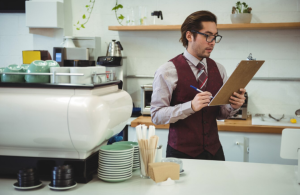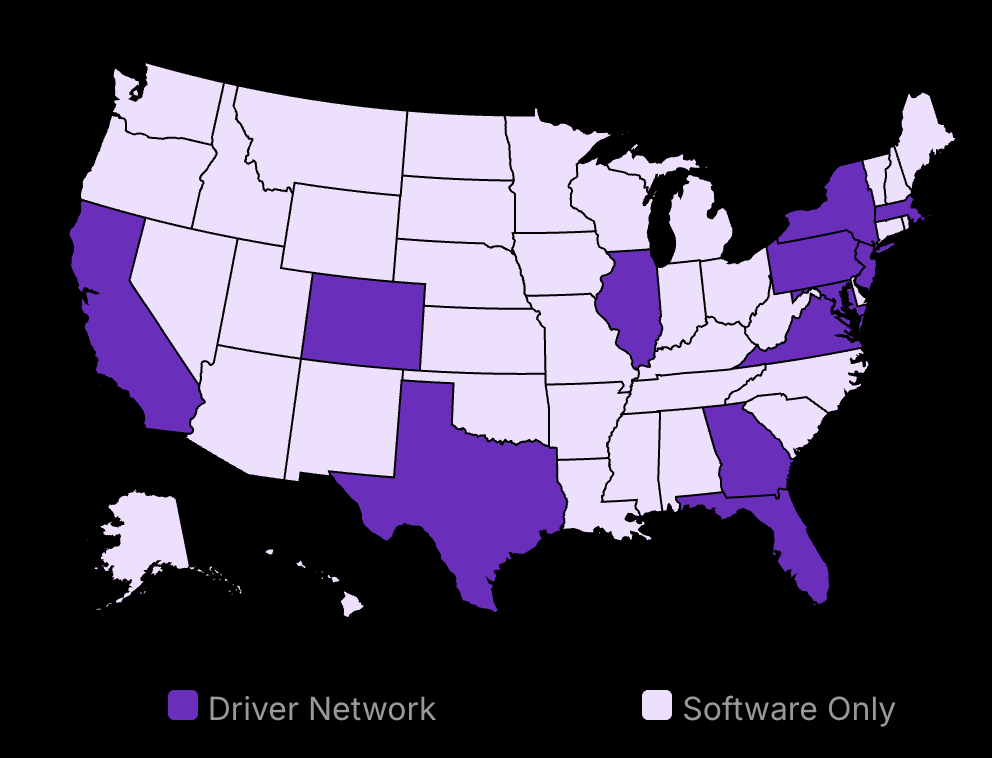The first sip of the best coffee, made from freshly roasted beans, is a silent conversation between you and centuries of agricultural tradition. It speaks without words. In 2025, this conversation has evolved in ways few coffee lovers could have predicted, including the rise of medium roast options.
Coffee isn’t just a drink anymore. For millions of coffee lovers , it’s the difference between a good day and a bad one. The right high quality coffee beans can transform your morning ritual from mundane to extraordinary—but finding them requires looking beyond marketing claims, Instagram trends, and the detailed tasting notes.
Did you know that climate change has altered the flavor profile of classic coffee regions so dramatically that the Arabica beans from Colombia today taste nothing like those from ten years ago? Or that a small collective of farmers in Ethiopia is using ancient techniques combined with cutting-edge science to create beans that coffee judges have scored higher than any in history?
The truth about the best coffee beans in the world in 2025 isn’t what most “experts” will tell you. The landscape has shifted. The new best coffee beans in the world have emerged while some traditional favorites have fallen behind.
Whether you’re looking for chocolate undertones in your morning brew, fruity notes in your pour-over, or that perfect espresso crema in your espresso shots, the answer lies in understanding which beans truly deserve the title “world’s best coffee beans” this year
Best Coffee Beans In The World
- The world’s highest quality coffee beans come from specific regions and varieties
Arabica leads for flavor, Robusta for strength, while Liberica offers unique taste profiles
Single-origin beans typically provide the most distinctive and premium coffee experiences
Coffee bean quality shapes everything from your morning cup to high-end cafe offerings. The 2025 coffee landscape reveals distinct patterns in bean preferences across global markets. Let’s examine the main varieties dominating this year’s best coffee scene and what makes each unique in flavor, growing conditions, and market position.
Arabica Beans
Arabica coffee beans remain the gold standard in 2025, accounting for approximately 60% of global coffee production. These beans grow best at elevations between 2,000-6,000 feet, where cooler temperatures allow the coffee cherries to mature slowly, developing more complex sugars and flavor compounds.
The typical flavor profile of Arabica features bright acidity with sweet, soft notes that can range from fruits and berries to chocolate and nuts. This year, we’re seeing particularly outstanding Arabica crops from Ethiopia, Colombia, and Guatemala, where climate conditions have been especially favorable for producing beans with exceptional balance.
What makes Arabica special is its genetic makeup – it contains almost 60% more lipids and twice the sugar content of Robusta beans. These compounds break down during roasting to create the complex flavor profiles that coffee enthusiasts prize. However, Arabica plants are more vulnerable to pests and diseases, which contributes to their higher market price.
“Arabica coffee beans make up about 60% of the world’s coffee production. They are known for their aromatic, flavorful, and less acidic profile.” This higher quality comes at a cost, both in terms of price and farming difficulty. Arabica plants produce fewer coffee beans per tree than Robusta, and they require more careful handling throughout the growing and processing stages.
Robusta Beans
Robusta has seen a notable rise in popularity during 2025, especially among espresso enthusiasts and those seeking higher caffeine content, making it a favourite coffee choice for many. These beans contain nearly twice the caffeine of Arabica (2.7% vs 1.5%), which not only provides more energy but also contributes to Robusta’s trademark bitter flavor and full body, making it a favorite for dark roast enthusiasts.
These hardy plants thrive at lower elevations (under 3,000 feet) and show remarkable resistance to diseases and pests that often trouble Arabica plants. Vietnam leads Robusta production in 2025, especially from small family farms, followed by Brazil and Indonesia, with new cultivation techniques improving overall bean quality across these regions.
The defining characteristics of premium Robusta include a strong, bold flavor profile with notes of dark chocolate, wood, and sometimes earth. When properly grown and processed, these beans produce a thick, rich crema in espresso drinks that many baristas find superior to Arabica-only blends, often providing a smooth taste. This quality has driven a 25% increase in premium Robusta prices in early 2025.
While historically considered inferior to Arabica, specialty-grade Robusta has carved out its niche in the high-end coffee market. Modern processing methods have eliminated many of the harsh notes once associated with Robusta, allowing its chocolate-forward flavor and substantial body to shine. Coffee experts now recognize that the highest-grade Robusta coffee beans can rival mid-grade Arabica in cup quality while offering distinctive flavor characteristics.
Liberica Beans
Liberica coffee beans represent just 2% of global coffee production in 2025, yet they’ve gained significant attention in specialty coffee circles. These beans are physically distinct—larger, more irregular in shape, and often described as “boat-like” compared to the oval Arabica or round Robusta beans, leading to their recognition as some of the best coffee varietie .
The flavor profile of Liberica is remarkably different from mainstream coffee varieties. Tasters describe complex floral and fruity notes, often accompanied by woody, smoky undertones that create a truly unique cup. Some detect hints of jackfruit, dark berries, and spices that aren’t typically found in other coffee varieties.
Historically centered in the Philippines and Malaysia, Liberica cultivation has expanded to small specialty farms in Indonesia and parts of West Africa in recent years. This expansion comes in response to increasing demand from specialty roasters seeking distinctive offerings. The coffee beans grow on particularly tall trees (up to 30 feet) that require special harvesting techniques, contributing to their limited availability and higher price point.
A significant development in 2025 has been the increased focus on Liberica’s climate resilience. As coffee-growing regions face changing conditions, the cultivation of fresh beans from Liberica’s ability to withstand higher temperatures and variable rainfall has attracted attention from both farmers and sustainability researchers. Several conservation projects have launched this year to preserve heirloom Liberica varieties that show particular promise for future coffee security.
What Makes a High-Quality Coffee Bean?
When addressing the question of which coffee beans hold the highest quality in the world, several factors come into play. The highest grade coffees typically feature:
Growing Environment: High-altitude cultivation (especially for Arabica), consistent temperatures, and appropriate rainfall all contribute to slower bean development and more complex flavors.
Processing Method: The way coffee cherries are processed after harvesting dramatically affects quality. Washed, natural, honey, and experimental fermentation methods each produce different flavor characteristics.
Bean Density: Denser beans, typically grown at higher elevations, contain more sugars and oils that translate to better flavor.
Size and Uniformity: Consistent bean size allows for even roasting and extraction, while fewer defects indicate careful sorting and quality control.
Freshness: The finest coffees are properly stored after harvesting and roasted within a year of picking, then consumed within weeks of roasting.

27% higher customer satisfaction
Professional delivery features:
- Real-time GPS tracking
- Automated ETA updates
- Delivery confirmation photos
- 27% higher delivery satisfaction
Best Coffee Bean Producers 2025
After examining top coffee bean varieties, let’s focus on the producers who create the world’s best coffee experiences. The global coffee landscape in 2025 features producers who have mastered both traditional methods and cutting-edge innovations. Our testing revealed three standouts that consistently produce exceptional coffee beans.
Blue Mountain Coffee from Jamaica
Blue Mountain Coffee holds a special place in the coffee world thanks to its distinctive mild flavor and notable lack of bitterness. During our testing, we found its balanced profile offers a clean, sweet taste with light floral notes.
Growing Conditions
These exceptional beans grow exclusively in Jamaica’s Blue Mountains at elevations above 3,000 feet, with cultivation typically stopping around 5,000 feet. The Blue Mountains reach heights of 7,402 feet, making them the Caribbean’s highest mountains. This high-altitude environment creates perfect growing conditions with:
Cool, misty climate
Rich soil composition
Natural shade from frequent cloud cover
Consistent rainfall patterns
Production Methods
What makes Blue Mountain Coffee truly special is its production process. Due to the steep mountain terrain, all harvesting must be done by hand, as machines cannot operate on these slopes. Each coffee bean receives careful attention through:
Hand-picking only perfectly ripe cherries
Wet processing to preserve flavor purity
Careful sun-drying to maintain quality
Strict sorting and grading
The Jamaica Blue Mountain coffee market was valued at USD 2.1 billion in 2023 and is projected to reach USD 3.8 billion by 2032, showing its growing global appeal.
Kopi Luwak from Indonesia
Kopi Luwak stands as perhaps the most famous (and controversial) gourmet coffee in the world; fun fact, it has a unique production process that creates its signature smooth, rich taste . Often called the most expensive coffee globally, it has a unique production process that creates its signature smooth, rich taste.
The Unique Production Process
The production of Kopi Luwak involves Asian palm civets (small cat-like mammals) that eat coffee cherries. During digestion, enzymes in the civet’s stomach break down proteins in the beans, resulting in:
Reduced bitterness
Enhanced smoothness
Complex flavor development
Unique aroma profile
After passing through the civet’s digestive system, the beans are collected, thoroughly cleaned, and processed to ensure they are freshly roasted.
Price and Authenticity
A cup of authentic Kopi Luwak coffee can cost between $35-$100 in high-end cafés, while a pound of beans can range from $100 to $600. This high price has led to widespread fraud in the industry.
Kona Coffee from Hawaii
Kona Coffee from Hawaii offers the best tasting coffee with a mild, sweet flavor profile with a hint of nuttiness that our testers found exceptionally balanced. Growing on the slopes of Mauna Loa in Hawaii’s Kona District, these beans benefit from ideal conditions that create their premium quality.
Growing Region
The Kona Coffee Belt is a narrow strip of land about 30 miles long and 2-3 miles wide. Here, coffee plants thrive due to:
Morning sunshine and afternoon cloud cover
Volcanic soil rich in minerals
Consistent mild temperatures
Protection from harsh weather
Flavor Profile
Our testing found Kona Coffee offers:
Medium body with bright acidity
Caramel sweetness with almond notes
Clean finish with minimal bitterness
Subtle fruit undertones
Best Coffee Bean Flavor Profiles 2025 For Coffee Drinkers
Coffee beans from different regions have distinct flavor profiles based on geography, climate, and processing
Ethiopia’s Yirgacheffe beans rank among the world’s finest, with complex floral and citrus notes
Understanding flavor profiles helps match coffee to personal preferences and brewing methods
Chocolate and Nutty Notes in Central America and South America
Central and South American coffee regions produce beans with rich chocolate and nut-forward profiles that many coffee drinkers find approachable and satisfying. Colombian beans from regions like Huila and Nariño develop pronounced milk chocolate notes with walnut undertones when grown at altitudes between 1,200-2,000 meters. These flavor characteristics come from specific soil compositions rich in volcanic minerals and consistent rainfall patterns throughout the growing season.
Brazilian beans, particularly from the Cerrado and Sul de Minas regions, offer more pronounced hazelnut and almond characteristics with subtle caramel sweetness. Research from the Brazilian Coffee Institute shows these flavor compounds develop during the drying process, where beans are often dried in the sun on patios rather than using the washed process common in other regions. This natural processing method allows the coffee cherry’s sugars to permeate the bean, creating these distinctive flavor notes.
The 2025 harvest has shown particularly strong chocolate profiles due to favorable weather conditions across the coffee belt. According to the Specialty Coffee Association’s 2025 Flavor Report, beans scoring above 85 points this year show 18% stronger chocolate notes compared to the previous five-year average. These beans are excellent choices for espresso blends and cold brew applications where their natural sweetness shines through extraction methods.
Fruity and Floral Notes in West and East Africa
African coffees, particularly those from Ethiopia and Kenya, lead the world in fruit-forward and floral coffee profiles. Ethiopian Yirgacheffe beans showcase jasmine, bergamot, and lemon notes that create a tea-like delicacy in the cup. These coffee beans grow at elevations of 1,800-2,200 meters in rich, fertile soils with ideal rainfall distribution. The washing stations in this region use extended fermentation periods (sometimes up to 72 hours) that help develop these complex floral compounds.
Kenyan coffees from regions like Nyeri and Kirinyaga display pronounced blackcurrant, grapefruit, and tomato-like acidity that creates a bright, vibrant cup profile. These distinctive characteristics result from a combination of the SL28 and SL34 coffee varieties, high altitudes, and Kenya’s unique double-fermentation processing method. The Coffee Research Institute in Kenya has documented how these processing techniques enhance the formation of volatile aroma compounds that create these distinctive fruit-forward profiles.
Rwandan beans have gained recognition in 2025 for their exceptional strawberry and orange blossom notes, with several Rwanda Bourbon variety coffees scoring above 90 points in international competitions. These profiles develop best when the coffee cherries reach perfect ripeness before harvesting, allowing for maximum sugar development within the bean.
Brewing Methods for Fruity Coffees
Light-roasted African coffees with pronounced fruit notes perform best with brewing methods that highlight their complexity without over-extracting. Pour-over methods like the Hario V60 or Kalita Wave using water between 195-205°F allow for proper extraction of these delicate compounds, resulting in a clean cup.
Extraction percentages between 18-20% typically yield the most balanced expression of fruity and floral notes. Higher extraction percentages often lead to excessive astringency that can mask these desirable characteristics of the final product . Lower temperature brewing methods like cold brew tend to diminish the perception of these bright notes, making them less ideal for fruit-forward coffees.
Earthy and Spicy Notes
Asian coffees, particularly those from Indonesia and India, offer earthy, spice-driven profiles that appeal to drinkers seeking fuller-bodied cups with a lingering finish. Sumatran Mandheling beans develop distinctive earthy, mushroom-like qualities with notes of cedar and dark chocolate. These characteristics develop through the unique wet-hulling process (called “Giling Basah“) where beans are hulled while still at high moisture content, then dried directly. This process creates the region’s signature heavy body and reduced acidity, which greatly influences the overall taste.
Indian coffees from the Western Ghats region, particularly the Monsooned Malabar variety, develop unique woody and spice notes through their exposure to monsoon winds. This centuries-old process deliberately exposes processed beans to moisture-laden winds, causing them to swell and change color while developing distinctive flavor compounds that can sometimes enhance their bitter taste. Scientific analysis published in the Journal of Food Science shows these beans contain higher levels of phenolic compounds that contribute to their distinctive peppery and clove-like characteristics.
Vietnamese beans, primarily Robusta varieties, offer chocolate and tobacco notes with a robust body that stands up well to milk and sugar. While often overlooked in specialty coffee conversations, these beans provide the backbone for many Italian-style espresso blends, where their earthy characteristics and heavy body create memorable crema and mouthfeel.
Caramel and Sweet Notes
Central American coffees from Guatemala, Honduras, and Costa Rica often display pronounced caramel sweetness with hints of stone fruit and subtle spice notes. Guatemalan Antigua coffees develop honey, apple, and cinnamon characteristics when grown at elevations of 1,500-1,800 meters, especially when the beans are fully washed in the volcanic soil surrounding the Agua, Fuego, and Acatenango volcanoes. These beans benefit from consistent temperature ranges with cool nights that slow cherry development and allow for complex sugar formation.
Honduras has emerged as a significant producer of sweet-profile coffees in 2025, with beans from the Marcala and Montecillos regions displaying maple syrup, peach, and brown sugar notes. The National Coffee Institute of Honduras reports that improved processing infrastructure has allowed farmers to better preserve these inherent qualities through controlled fermentation and drying. Honduran beans scoring above 86 points have increased by 32% since 2020, reflecting these improvements.
Costa Rican beans from the Tarrazú and West Valley regions offer bright orange and apricot sweetness balanced with milk chocolate undertones. These characteristics develop through meticulous processing at micro-mills in small batches, where producers often use honey and natural processing methods to enhance sweetness. Extended drying periods of 15-20 days allow for slow moisture reduction that preserves these delicate sweet compounds.
Processing Methods for Enhanced Sweetness
Processing methods significantly impact a coffee’s sweetness profile. Natural (dry) processing, where the entire cherry dries around the bean, typically produces the most pronounced sweetness by allowing fruit sugars to permeate the bean during drying. Honey processing, where varying amounts of fruit mucilage remain on the bean during drying, creates intermediate sweetness levels with added complexity that can be reflected in the tasting notes.
The degree of fermentation control has advanced substantially in 2025, with producers using temperature-controlled tanks and specific yeast strains to guide flavor development. Extended anaerobic fermentation, where coffee cherries ferment in sealed, oxygen-free environments for 48-96 hours, has become increasingly popular for enhancing sweet notes while adding interesting complexity to the cup profile, with unique tasting notes resulting from the process.
Regional Coffee Bean Excellence
Ethiopia consistently produces some of the world’s finest coffee beans, particularly from the Yirgacheffe, Sidamo, and Guji regions. These areas benefit from ideal growing conditions: high elevations (1,700-2,200 meters), balanced rainfall patterns, and rich soil. Ethiopian coffees consistently score above 90 points in international competitions due to their extraordinary complexity and distinctive flavor characteristics.
Colombia remains a global coffee powerhouse, with regions like Nariño, Huila, and Tolima producing exceptional beans with balanced profiles of chocolate, caramel, and red fruit notes. The Colombian Coffee Federation’s research into specific microclimates and processing methods has helped farmers develop distinctive regional characteristics that command premium prices in international markets.
Panama’s Geisha variety coffees from the Boquete region continue to break auction price records in 2025, with the finest lots selling for over $1,000 per pound. These extraordinary beans display jasmine, bergamot, and papaya notes with remarkable clarity and sweetness. The limited production and extraordinary cup profile make these the most sought-after coffees among collectors and specialty roasters worldwide.
Where the World’s #1 Coffee Bean Grows
Based on international competition results, auction prices, and expert consensus, Ethiopia’s Yirgacheffe region produces what many consider the world’s finest single-origin coffee beans. The specific microregion of Aricha, known for the best beans located at elevations above 2,000 meters, consistently produces beans with extraordinary complexity: jasmine, bergamot, peach, and honey notes with vibrant citrus acidity and silky mouthfeel.
The 2025 Cup of Excellence winner, a natural processed Yirgacheffe from producer Abebe Bikila, scored an unprecedented 96.8 points from the international jury. This coffee displayed exceptional clarity with layers of floral, fruit, and honey characteristics that evolved as the coffee cooled in the cup. The extraordinary balance of sweetness, acidity, and aromatic complexity represents the pinnacle of coffee quality currently achievable.
For coffee professionals seeking comparable experiences at more accessible price points, look to other Ethiopian regions like Guji and Sidamo, which produce beans with similar characteristics at somewhat lower price points. Varieties like Panama Geisha, Kenya SL28, and Jamaica Blue Mountain also represent extraordinary quality in the realm of specialty coffee, but with different flavor profiles reflecting their unique growing environments.
Best Beans For Coffee Roasters
As we’ve explored the coffee landscape of 2025, from the classic Arabica and bold Robusta to the exotic Liberica, it’s clear that quality coffee is about both tradition and innovation. The world’s finest beans—Jamaica’s Blue Mountain, Indonesia’s Kopi Luwak, and Hawaii’s Kona—continue to set the standard for excellence, while tasting notes of dried fruit combined with sustainable practices like Fair Trade, organic farming, and Rainforest Alliance certification have become essential rather than optional.
The flavor spectrum we’ve examined—from chocolate and nutty Central American beans to fruity African varieties and earthy Asian profiles—offers something for every coffee lover. Your perfect cup is waiting somewhere in this rich tapestry of options.
As you seek out the best coffee beans in the world in 2025, remember that the “best” is ultimately personal. Consider taste preferences, brewing method, and values regarding sustainability. Whether you prioritize the smooth notes of Blue Mountain or the ethical sourcing of Fair Trade beans with hints of tropical fruit, today’s coffee world offers unprecedented quality and choice.
Your coffee journey doesn’t end with knowledge—it begins with the first exceptional cup of great coffee you brew with your newfound expertise. To truly elevate your home brewing experience or professional café setup, investing in quality essential coffee bar equipment is crucial. From grinders that preserve bean integrity to espresso machines designed for precision, having the right tools complements your chosen coffee beans and brings out the best flavors in every cup.




























